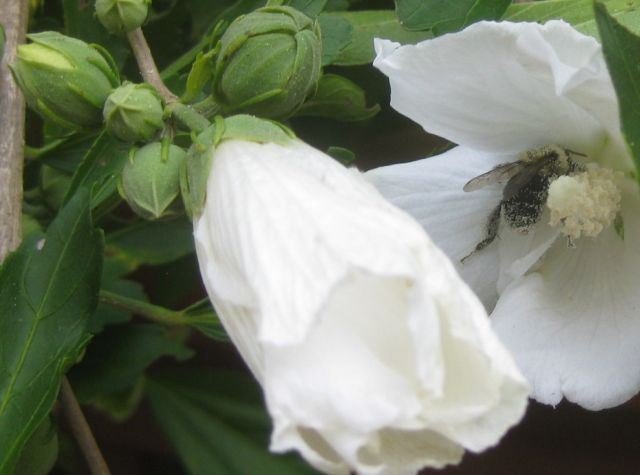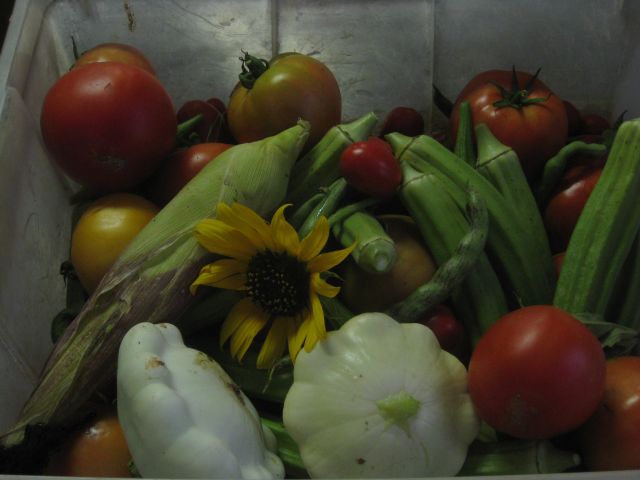Tomato season is peaking and I am doling out bags to neighbors, friends and my running group. A few weeks ago I was plagued with blossom rot but that has disappeared with changes to my watering methods. The best producer is still the Parks Whopper which a neighbor gave me in exchange for 6 of my varieties. It has outperformed the rest, though interesting my neighbor has not done as well with her Parks but is enjoying my Juliet and Cherokee Purple.
The daily vegetable harvest is tomatoes, cucumbers, beans (rattlesnake and common), pattipan squash and okra.
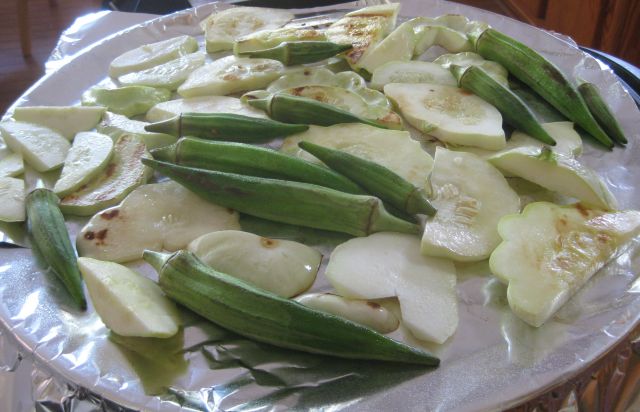
Okra grows rapidly and should be harvested daily. Miss 3 days and it is too large and stringy. The corn disappointed again – I was unable to water sufficiently and they are spindly.
The fruit orchard is bearing well and recent heavy rains have helped tremendously. My best apple tree, the early season Pristine, is about done. The Ginger Gold was ok, prodigiously huge apples and ok taste. The Matsu, which is smaller and younger than the rest produced well for the first time – tasty. The Paduckah has lots of good looking apples, but they have little taste.
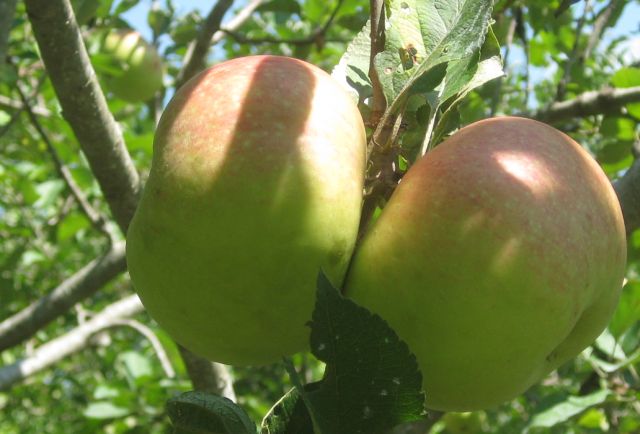
An Arkansas Black apple tree provides setting sun protection to the bee hive and this is its first year of decent production and the apples are promising. In another post I mentioned how I clear airlocks by opening a valve at the bottom of the hill – rather than waste the flush water I direct it in a channel (after bouncing off a rock) to the Arkansas Black which is responding well to this consideration.
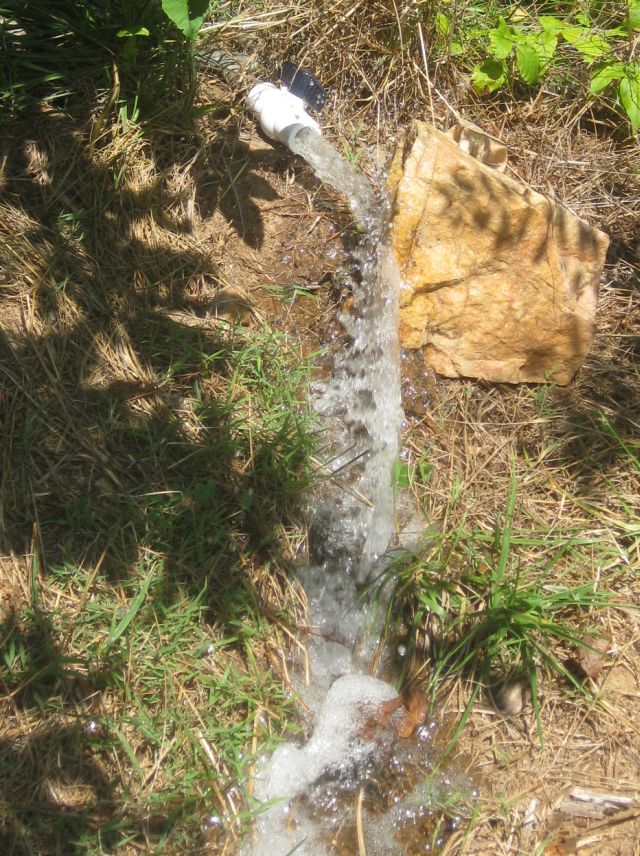
My pears will soon be ready – the Kieffer and TyTy are almost ready and the prize and jewel, the Giant Korean pear is following closely behind.
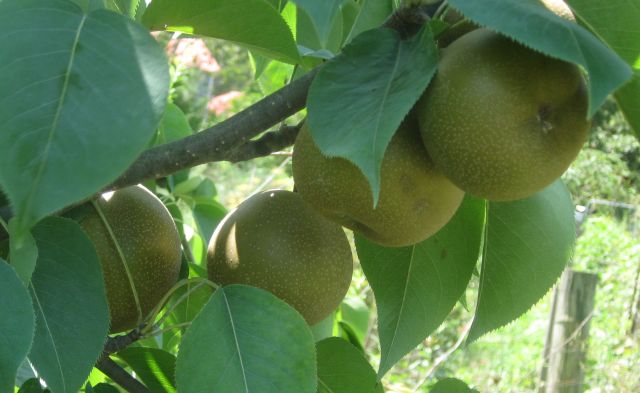
I have one peach tree (the other died) and it produced delicious peaches though we had to do a lot of cutting out of pests and disease. The reward is sufficient for me to keep it in production. I have a second small orchard planted several years after the first and the Ein Shemer (from Israel, low chill hours) has a pleasing taste. The jujube looks good and we will wait until it turns brown and crinkly, and the fig trees which were cold killed the past few years have tiny little figs. The American and Asian persimmon are growing well and may produce fruit next year.
So there is plenty to eat and it is pleasurable to pick what is ready and, after cutting out pests, eat with the skin without washing and without concern for toxins.
